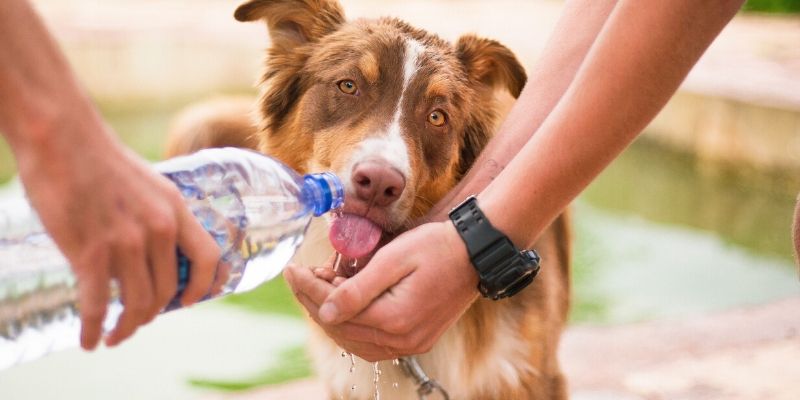Many humans are going for a relatively new diet fad called the ketosis diet. You have to eat foods high in fats and low in carbohydrates (or maybe go through 1-2-3 days fasting periods) to put your body in the state of ketosis.
It happens when you achieve a higher concentration of ketone bodies in your blood. While there are some risks and side effects associated with the keto diet, when doing it right, you might benefit from that state in many ways.
But how about dogs?
While some people do choose to put their dogs on a keto diet, more often than not, media talking about something else. A severe medical condition that can be even fatal for your pup, called Diabetic ketoacidosis (KDA).
So let’s try to identify the differences between those notions.
Here’s what we’ll cover:
What is ketosis in dogs?
Ketosis in dogs (just like in humans) is the decrease of glucose and the elevation of ketones in your dog’s blood. Pup’s body might use carbs or fats as a source of energy.
When your pet is on a high-carb diet, his cells turn carbs to glucose and use it as a power source. The excess of glucose can be stored in the liver as glycogen.
When switched to low-carb, high-fat diet pup’s body will deplete all the glycogen. And then, it will start using fat as a source of energy by converting it into ketones.
This is a natural process happening within a healthy body. And that’s how you or your pup get into ketosis. But don’t confuse it with life-threatening diabetic ketoacidosis.


What causes Ketosis in dogs?
The cause of ketosis in dogs (just like in humans) can be a decrease in glucose but cutting off the carbs. So the pet’s body has to adjust to a new type of fuel (ketones derived from fats).
It can be achieved, for instance, by prolonged fasting or a shift toward a high-fat, low-carb diet.
Interestingly enough, some studies were trying to establish the differences of ketosis in dogs and humans.
Including this old (from 1940) but very comprehensive research by Lathan A. Crandall from the University of Tennessee College of Medicine. It was confirmed that ketosis in dogs is pretty much similar to ketosis in humans. The only difference is that it takes dogs longer to achieve this state.
The ketosis of fasting develops within 39 hours in humans compared to 2 to 3 days in the dog. And sustains significantly higher levels of ketones in the former. Apart from this difference, ketosis in both species is comparable.

Ketosis in dogs with diabetes

As we’ve discussed before, high ketone bodies in dogs with diabetes are not called ketosis, ketoacidosis. Not all dogs with diabetes suffer from this condition.
If their glucose levels are managed well, your dog is not likely to develop it.
However, if your dog has an infection, inflammation, or heart disease or some other condition, then the stress of illness may cause blood sugar levels to rise. And that will cause the body to produce ketones to use as energy.
When this condition occurs, it could not be very easy for your dog’s body to maintain healthy fluid bodies or a healthy electrolyte balance. And lead to an abnormal heart rate and muscle function and even death.

Ketosis in small vs. big dogs
There doesn’t seem to be any evidence that ketosis is more prevalent in small dogs than in larger dogs or vice versa. It seems to depend more on the dog’s age, general health, diet, and the care he or she receives.

Signs of ketosis in dogs?

Adjusting to the new way of fueling the body might be uncomfortable for your pup. And ketosis side effects might last for several days, while the pet’s body is going through an adaptation period.
The list includes:
- Diarrhea and constipation
- So-called Keto-flu (lethargy and weakness for a few days)
- Sudden weight loss.
- Dehydration. Signs of dehydration in your dog may be a dry nose, dry skin, weakness, etc.
- Loss of appetite. If your healthy dog suddenly seems to lose all interest in eating, then chances are there is a medical reason for his loss of appetite. While a loss of appetite can be a sign of many illnesses, it is also may be a sign of ketosis in dogs.
- A sweet smell to his breath. High levels in ketones often result in a sweet smell to your dog’s breath. This smell will be different than your dog’s normal breath and easily noticeable.
And it goes on. Those unpleasant symptoms won’t last for long, though.
Once your pet’s body fully accustomed, he or she will be feeling much better and enjoy all the benefits of the new diet.

Benefits of ketosis in dogs
Let’s say your pup follows the rules of the balanced and rich in nutrients keto diet. Preferably with regular vet’s checkups. In this case, there are dozens of health benefits that your pet can experience.
Amongst the studied possible positive outcomes of the keto diet for your pup are improved fat metabolism and weight control, reduced inflammation, improve liver health, decreased risk of chronic diseases, and the list goes on.
One of the largest web libraries dedicated to the subject is the resource page of non-profit project KetoPet Sanctuary. There you can find links to various studies investigating the influence of keto diet on pet’s health: from fighting cancer to treating epilepsy.
The story behind this organization is quite remarkable.
The company was founded back in 2014. It was evolving and know one of its primary goals is to save shelter dogs suffering from terminal cancer from euthanization.
Once KetoPet Sanctuary welcomes new guests, they switch from standard dog’s diet to ketogenic diet, performing various tests on the way.
So far they are seeing impressive results in dogs with mast cell, hemangiosarcoma, and other types of canine cancer. So these guys know what they are talking about.
Thanks for the blog graphics: Canva.com


